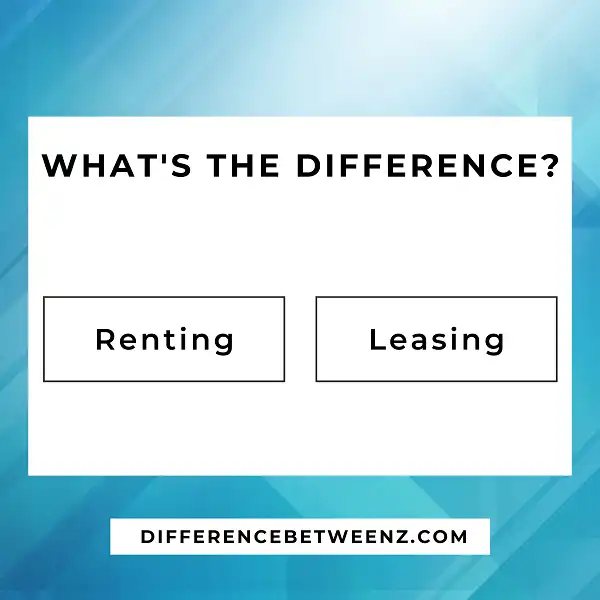There are many differences between renting and leasing a property. Typically, when someone rents a property, they are signing a lease agreement for a specified amount of time, usually one year. When they sign the lease agreement, they agree to pay rent each month during that time period. Leasing a property is very similar to renting, but the tenant has the option to purchase the property at the end of the lease agreement.
There are pros and cons to both renting and leasing properties. In this blog post, we’ll discuss some of the key differences between these two housing options. By understanding the differences, you can decide which option is best for you.
What is Renting?
Renting is a process whereby a person obtains the right to use property, usually land or a house, from another person for a certain period of time, in exchange for regular payments. Renting can be an excellent way to live in the desired location without the commitment of purchasing a property. It can also provide flexibility if your housing needs change, such as if you get a new job in a new city.
Renting may also be a more affordable option than purchasing a home outright, particularly if you’re not sure how long you’ll stay in one place. However, it’s important to remember that you will not build equity or gain any ownership rights while renting. If you’re interested in Renting, be sure to do your research and find a reputable landlord or rental company. Once you’ve found the perfect place to call home, sit back and enjoy the perks of being a renter!
What is Leasing?
Leasing is a process by which a firm acquires the use of an asset for a specific period of time. The lessor, or owner of the asset, grants the use of the asset to the lessee, or user, in exchange for regular payments over the life of the lease. Leases are often used to finance the purchase of expensive assets such as buildings, vehicles, and equipment. Leases can be either capital or operating in nature.
Capital leases are typically used to finance long-term assets with a useful life of more than one year. Operating leases are typically used to finance short-term assets with a useful life of less than one year. Leases are also classified as either fixed-term or open-ended. Fixed-term leases have a predetermined lease term, while open-ended leases do not have a preset term length. Leases can be structured in a variety of ways, and the type of lease agreement that is best for a particular situation depends on the needs of the lessor and lessee.
Difference between Renting and Leasing
Renting and leasing are both forms of agreement that allow individuals to use property owned by someone else, but there are key differences between the two. Renting generally refers to a short-term arrangement, such as an apartment, while leasing usually refers to a long-term arrangement, such as a car. Another key difference is that renting typically does not involve any type of contract, while leasing always involves a contract.
The contract for a lease typically outlines the terms of the agreement, such as the length of the lease and the amount of rent that is due each month. Finally, renters typically have far fewer rights than tenants who have signed a lease. For example, a landlord can evict a renter with little notice, but they must go through a more lengthy process to evict a tenant. Understanding these key differences is essential for anyone who is considering entering into either type of agreement.
Conclusion
When it comes to deciding between renting and leasing, there are a few things you should consider. How long do you plan on having the vehicle? Are you willing to commit to a certain number of years? What is your budget like each month? By taking all of these factors into account, you can better decide which option is right for you.


